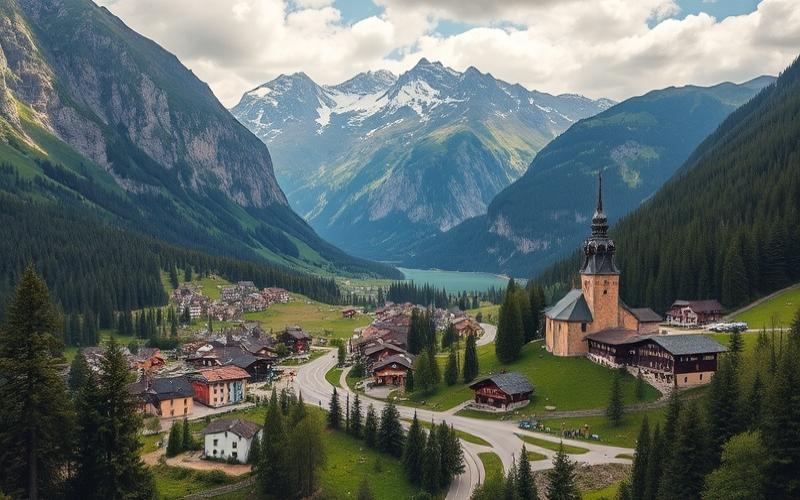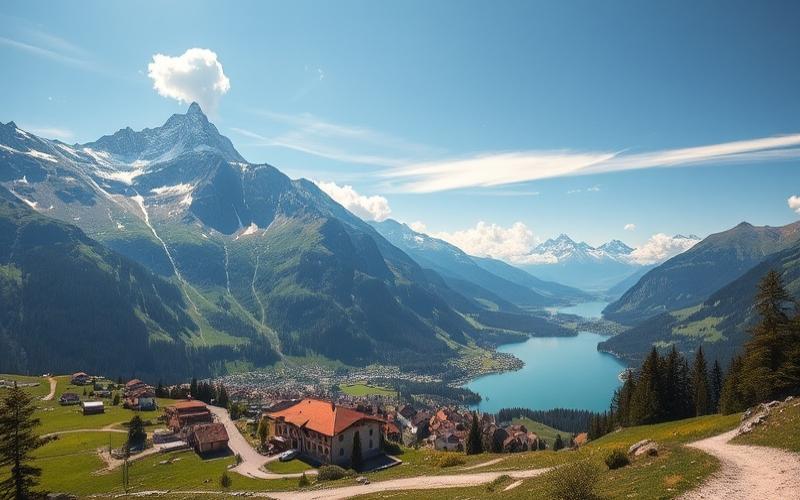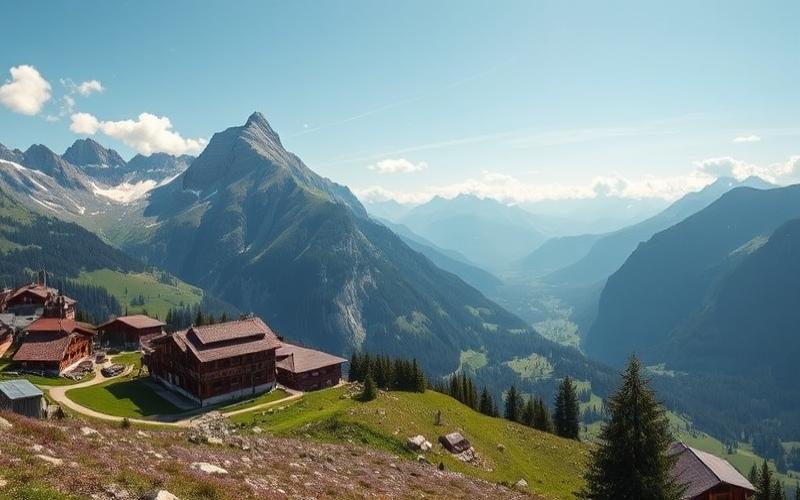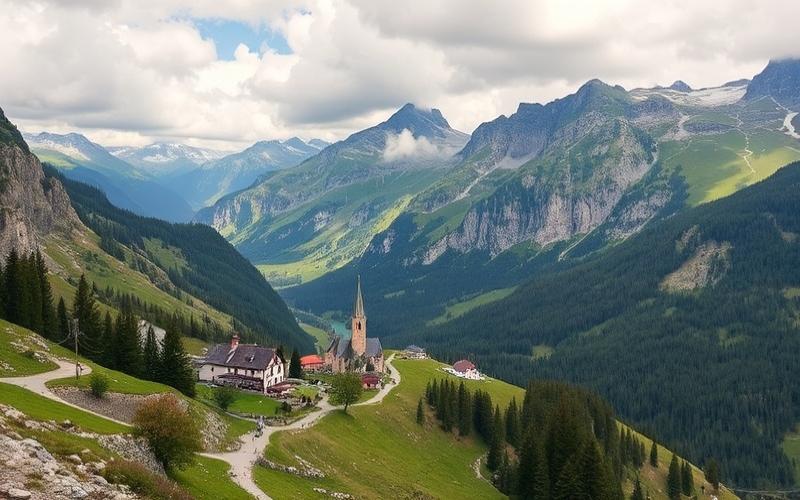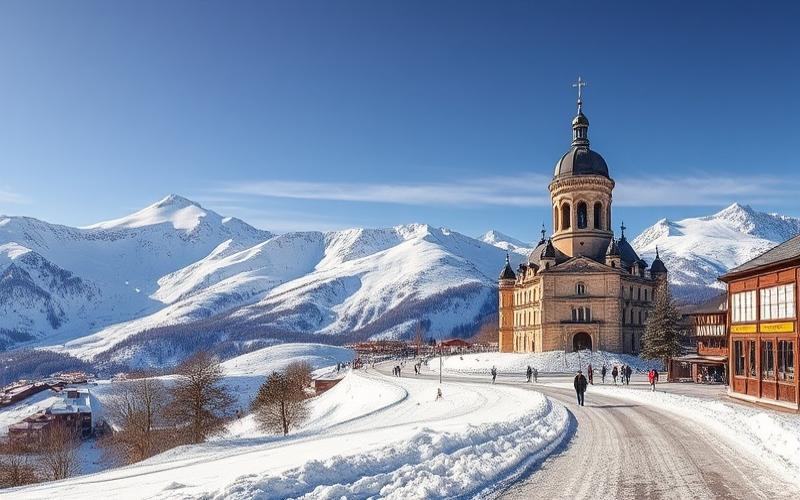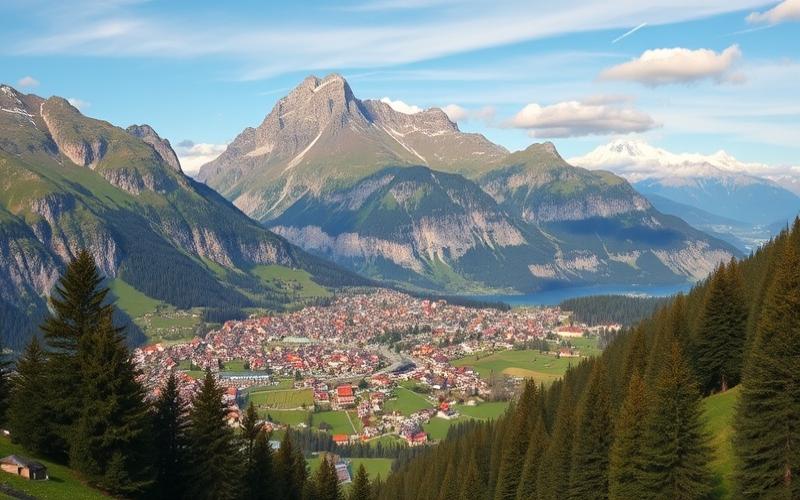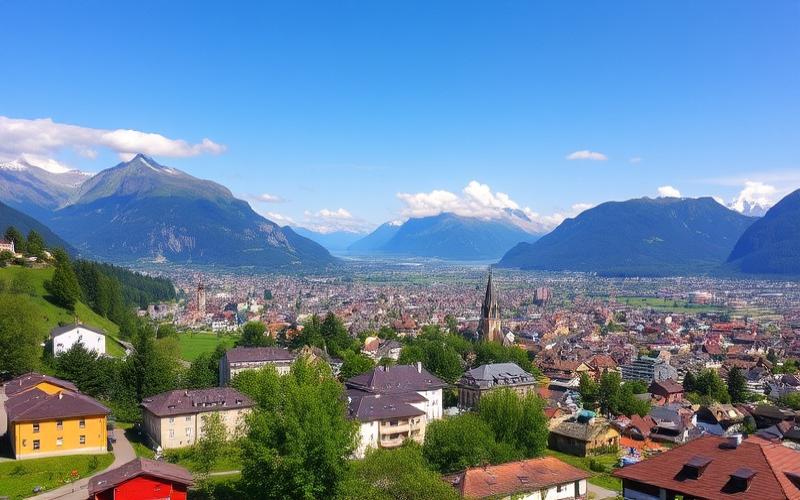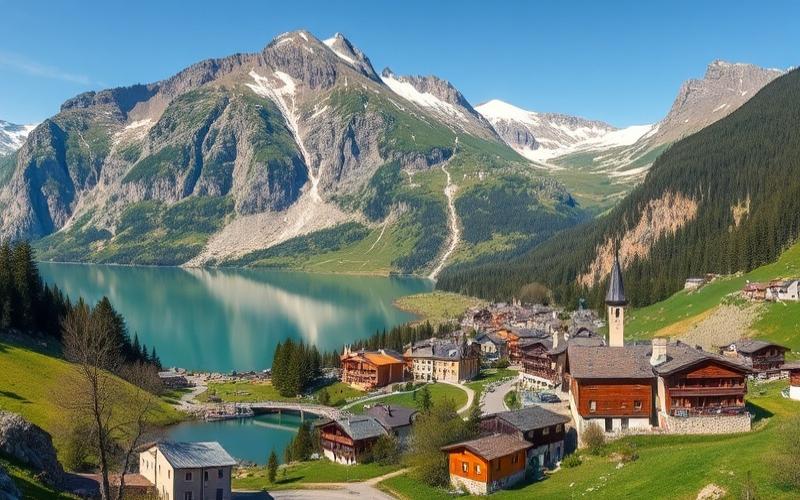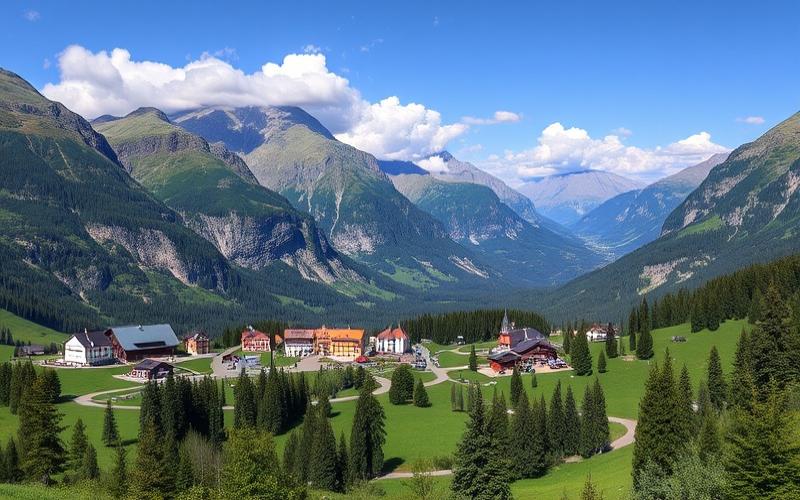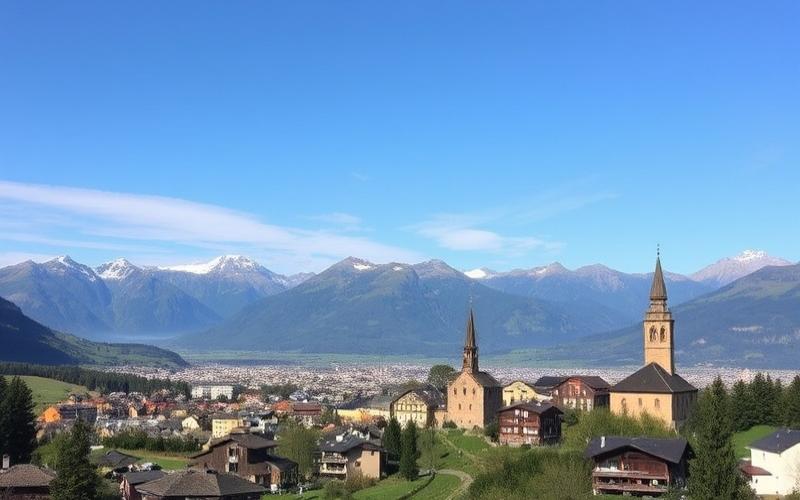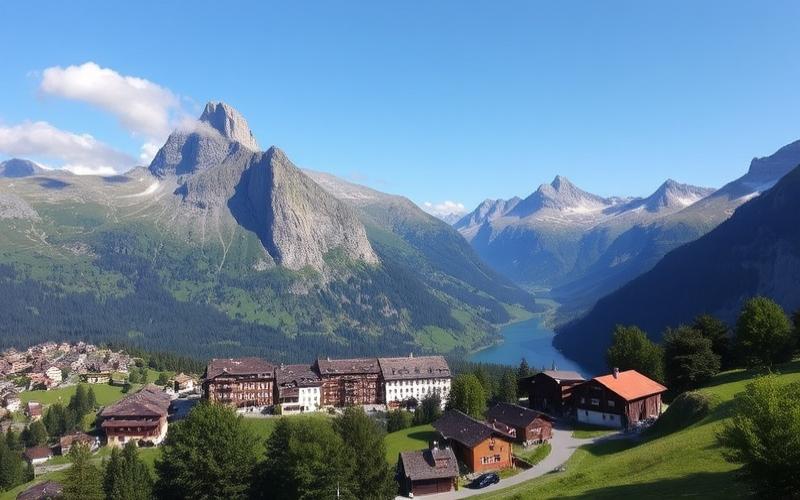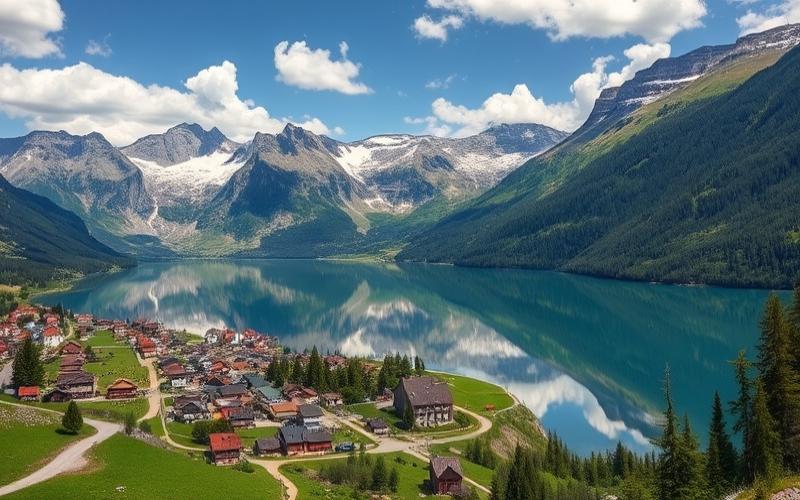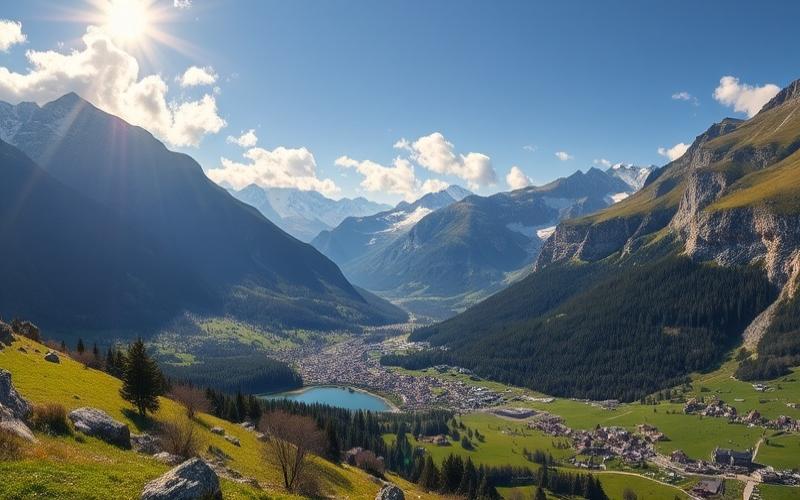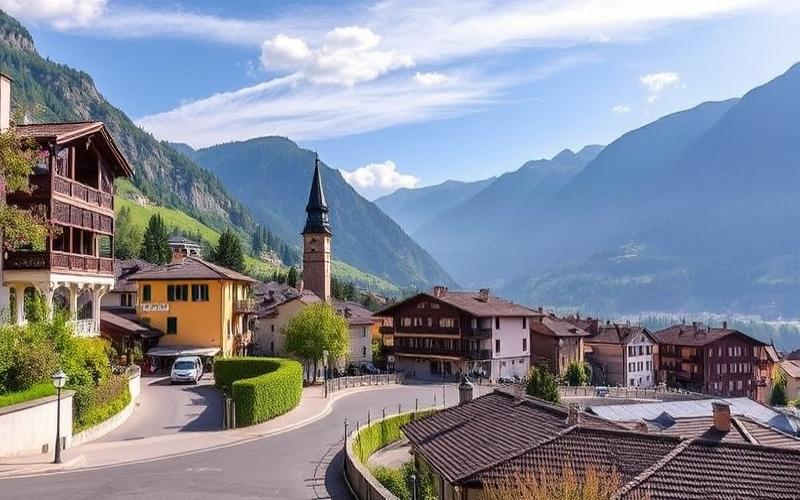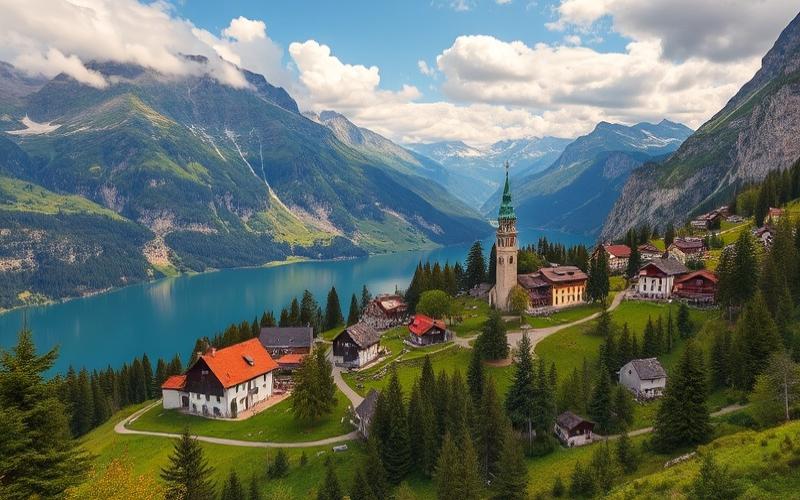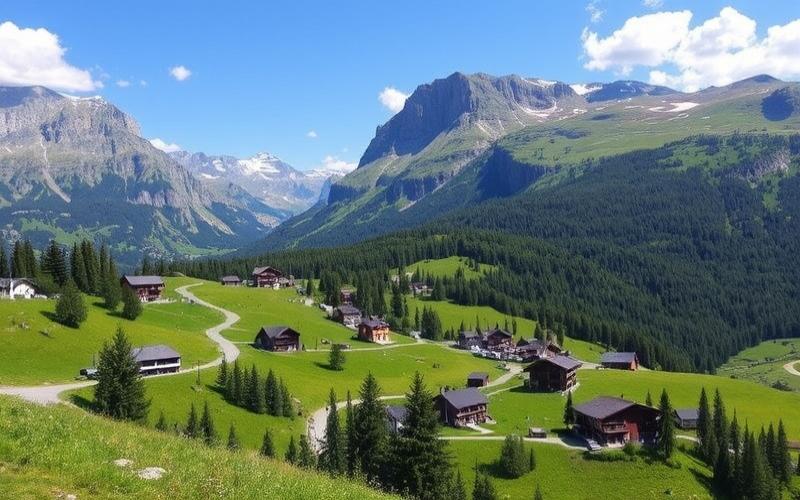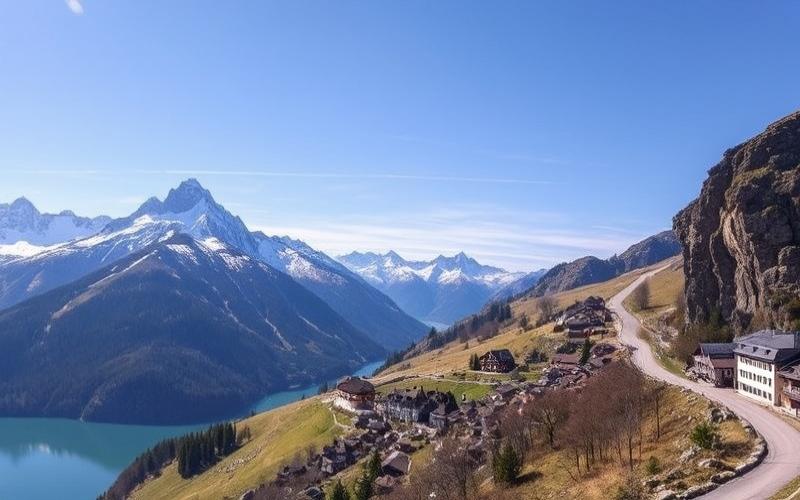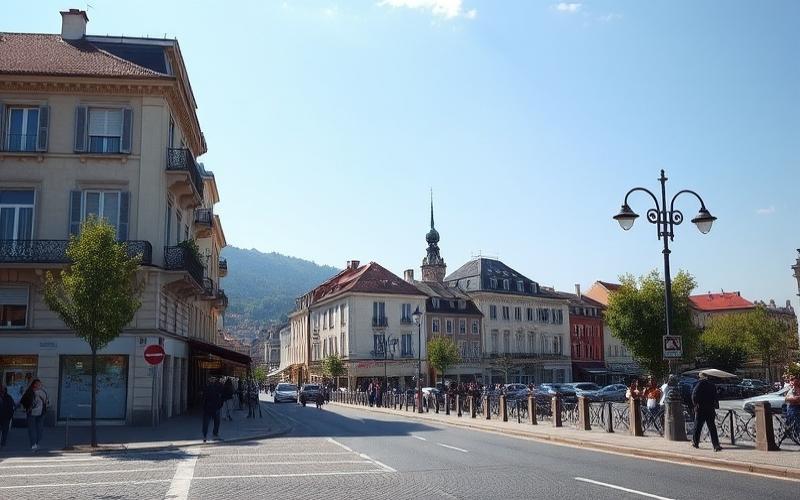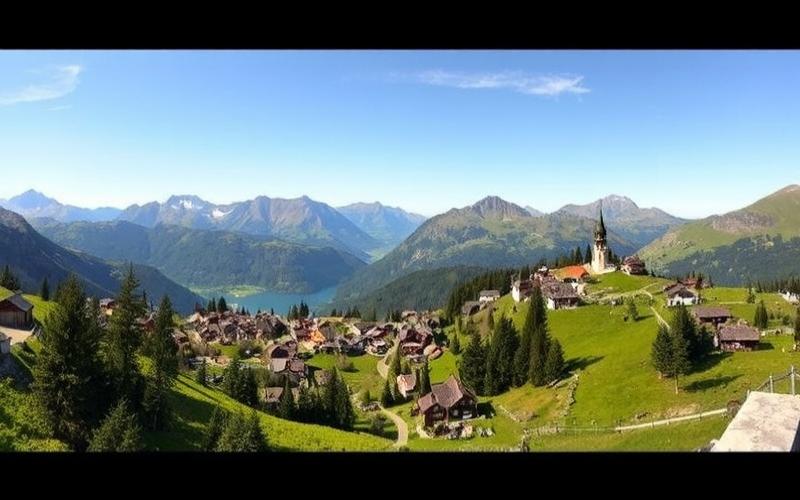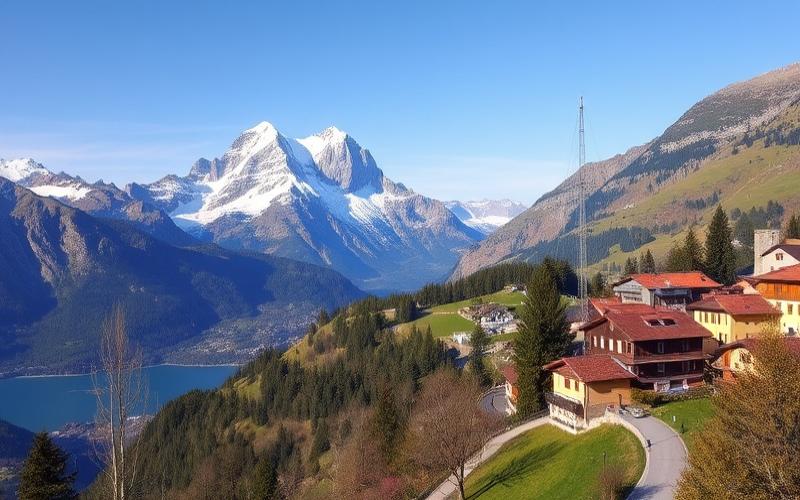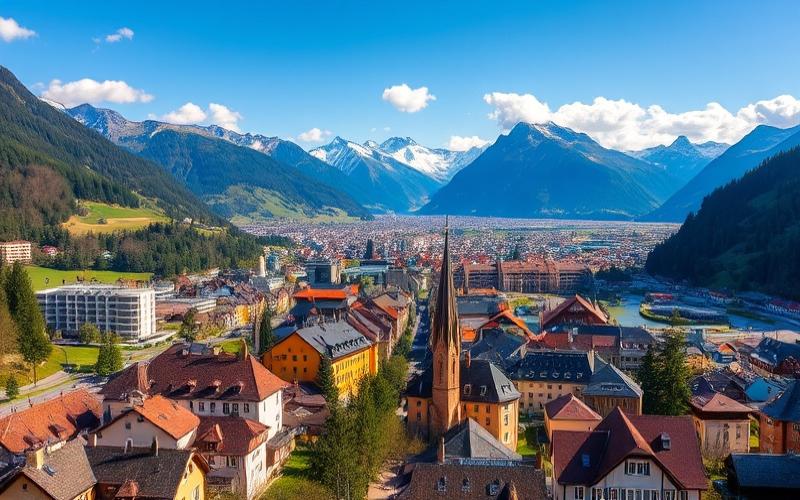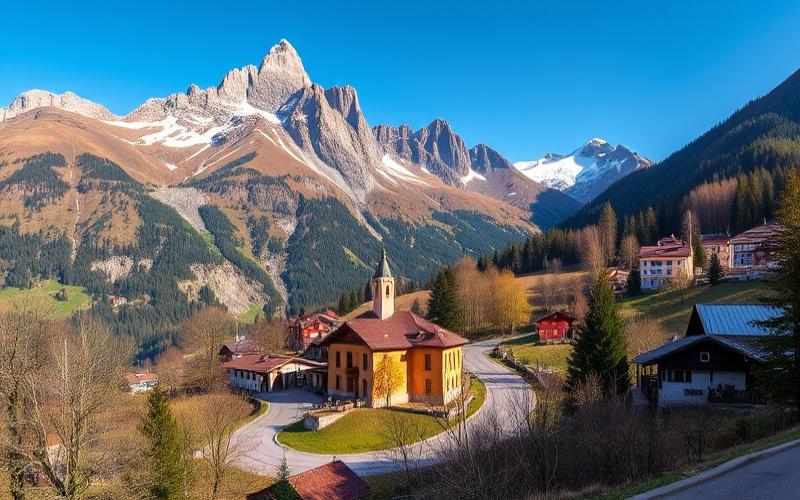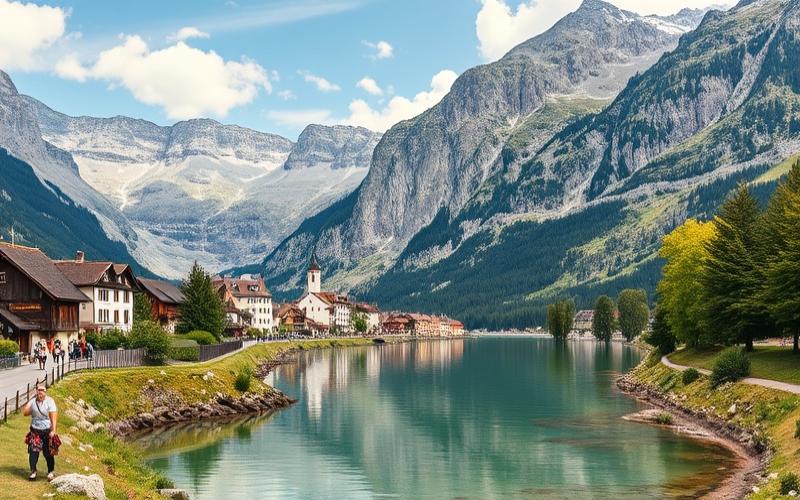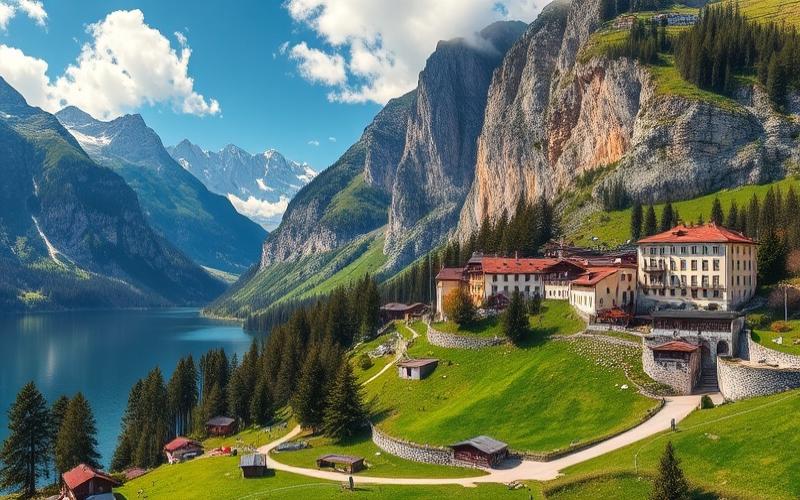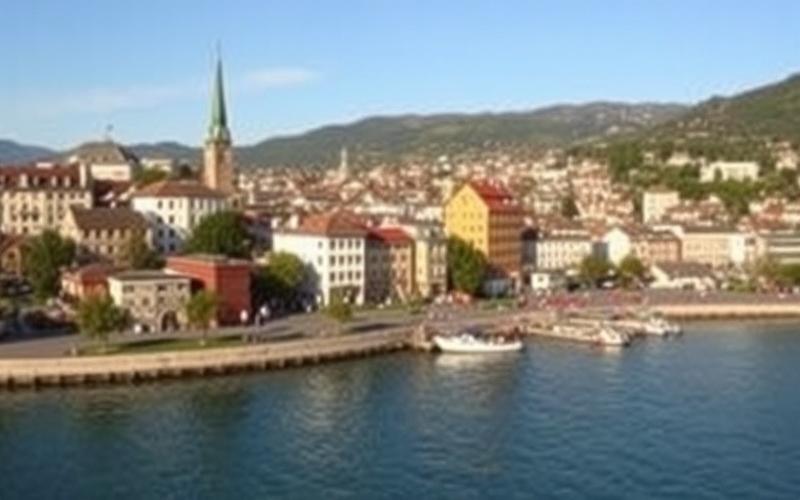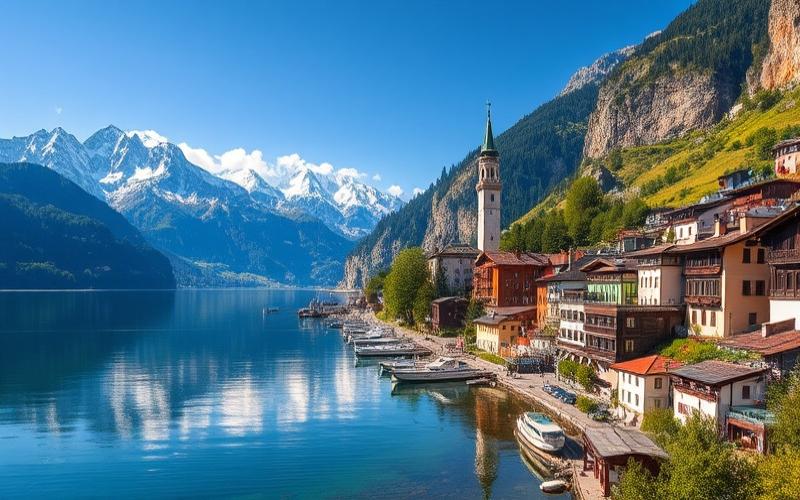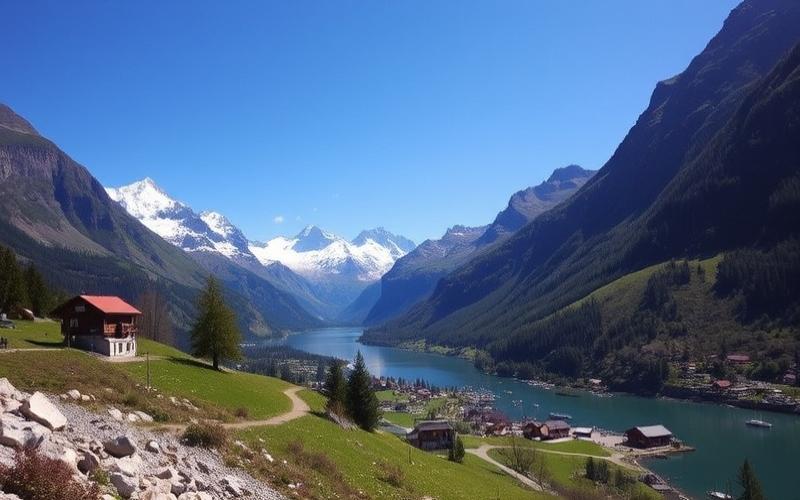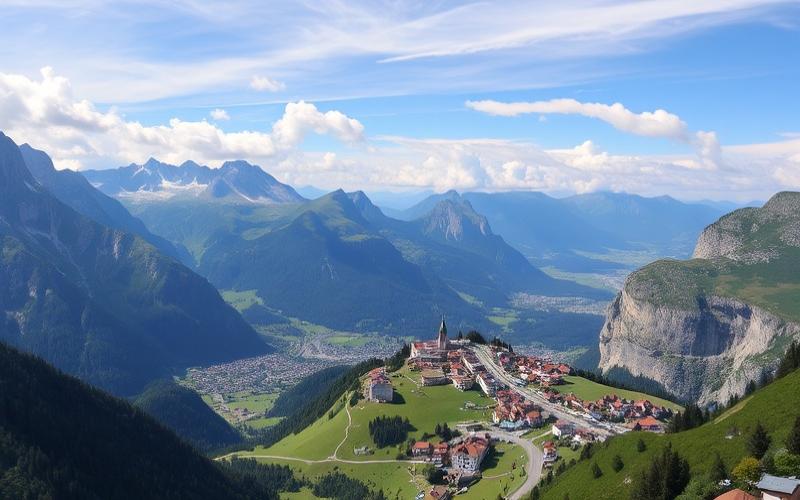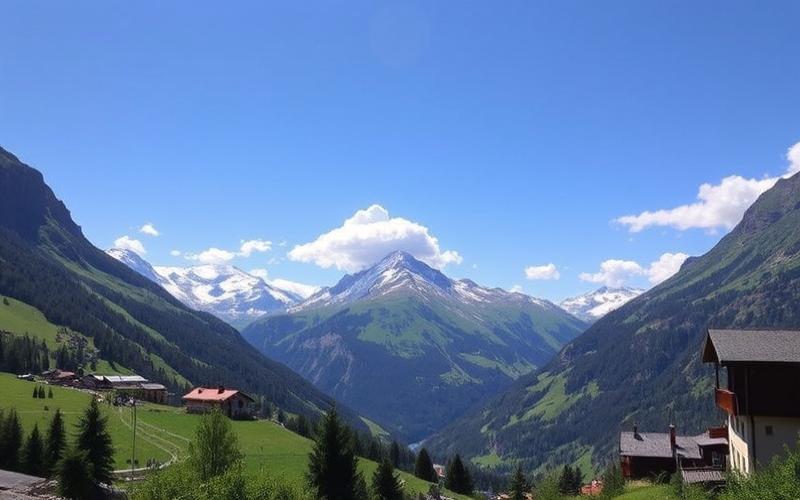
 Published on and written by Cyril Jarnias
Published on and written by Cyril Jarnias
The Swiss real estate market continues to fascinate investors worldwide, offering a unique blend of economic stability, high quality of life, and attractive returns. In 2025, this market presents interesting dynamics, with significant price variations between different cities across the country. Let’s dive into a detailed analysis of current trends and future prospects for Swiss real estate.
The Podium of the Most Expensive Cities: Zurich, Geneva and Lausanne Lead the Way
Zurich, Switzerland’s economic engine, maintains its position as the country’s most expensive city. With an average price per square meter reaching 21,050 Swiss francs for owned apartments, the German-speaking metropolis remains undoubtedly the most sought-after and costly real estate market in Switzerland[1]. This trend is explained by several factors:
- A high concentration of international companies and financial services
- An exceptionally low unemployment rate (0.0% in June 2024)
- A quality of life regularly ranked among the best in the world
Geneva, the international city, closely follows Zurich with prices reaching 20,800 Swiss francs per square meter for apartments[1]. The city at the end of Lake Geneva benefits from several assets that support real estate demand:
- The presence of numerous international organizations and a robust banking sector
- An exceptional living environment between lake and mountains
- Strong appeal for expatriates and international investors
Lausanne completes the podium with average prices of 15,530 Swiss francs per square meter for apartments[1]. The Olympic capital stands out for:
- Economic dynamism driven by the health and education sectors
- A privileged geographical location on the shores of Lake Geneva
- A real estate market more accessible than Geneva’s, attracting many commuters
Good to Know:
The three most expensive cities in Switzerland – Zurich, Geneva, and Lausanne – display prices per square meter well above the national average, reflecting their economic attractiveness and exceptional quality of life.
Mid-Sized Cities: A Balance Between Attractiveness and Accessibility
Basel, Switzerland’s third-largest city by population, presents a dynamic real estate market with average prices of 13,020 Swiss francs per square meter for apartments[1]. The Rhine city benefits from several assets:
- A major industrial hub, particularly in the pharmaceutical and chemical sectors
- A strategic position at the borders of France and Germany
- A rich cultural heritage and a vibrant art scene
Bern, the federal capital, shows more moderate prices, with an average of 11,550 Swiss francs per square meter for apartments[1]. This relative accessibility is explained by:
- A job market dominated by the public sector, offering more stable but generally lower salaries than in the private sector
- More moderate demographic growth than in major metropolitan areas
- A peaceful living environment, appreciated by families and retirees
Winterthur, often considered an affordable alternative to Zurich, has seen its prices increase significantly in recent years. In the fourth quarter of 2024, the city recorded a 1.3% increase in apartment prices[2]. This trend is explained by:
- Its proximity to Zurich, attracting many commuters
- A diversified economic fabric, with a mix of traditional industries and innovative startups
- Significant investments in infrastructure and urban planning
Good to Know:
Mid-sized Swiss cities like Basel, Bern, and Winterthur offer a good compromise between quality of life and financial accessibility, with real estate prices generally lower than those in major metropolitan areas while benefiting from dynamic and diversified economies.
Market Surprises: Cities on the Rise
Schaffhausen is emerging as one of the most dynamic cities in the Swiss real estate market in 2025. With a 1.8% increase in apartment prices in the last quarter of 2024 and an annual growth of 1.7% for apartments, Schaffhausen is attracting increasing attention from investors[2]. This trend is explained by:
- Its proximity to Germany, offering cross-border opportunities
- An effort in urban revitalization and attracting innovative companies
- Prices still relatively affordable compared to major metropolitan areas
The canton of Jura is also experiencing notable growth, with a 1.2% increase in single-family home prices[2]. This positive evolution is due to several factors:
- Investments in transport infrastructure, improving connectivity with the rest of Switzerland
- A more affordable cost of living, attracting families and businesses
- A preserved natural environment, meeting a growing demand for a lifestyle closer to nature
Thurgau also stands out with a 1.2% increase in single-family home prices[2]. This eastern Swiss canton benefits from:
- Its location between Zurich and Lake Constance, offering a balance between professional opportunities and quality of life
- A diversified economic fabric, combining agriculture, industry, and services
- Real estate prices still attractive compared to neighboring cantons
Good to Know:
Cities like Schaffhausen and cantons like Jura and Thurgau are emerging as new investment opportunities, offering interesting growth prospects at more affordable prices than in traditional urban centers.
Trends to Watch: Price Evolution and Prospects for 2025-2026
The Swiss real estate market is expected to experience moderate but continuous growth in 2025, with significant variations depending on the region. Wüest Partner forecasts indicate a 3.4% increase for apartments and 3% for houses across the entire territory[5]. This upward trend is explained by several factors:
- Sustained demand, fueled by population growth and immigration
- Interest rates expected to remain relatively low, despite anticipated slight increases
- A housing supply struggling to keep up with demand, particularly in urban centers
Major cities like Zurich and Geneva are expected to continue experiencing the most significant price increases. This trend is explained by:
- Undiminished economic attractiveness, with sectors like finance and technology in full expansion
- A chronic housing shortage, exacerbated by strict regulatory constraints on construction
- Constant appeal to international investors, seeing Switzerland as a haven of stability
Mid-sized cities and suburban regions could offer the best investment opportunities. Locations like Winterthur, Schaffhausen, or certain municipalities in the canton of Thurgau present interesting growth potential, with:
- Prices still relatively affordable compared to major metropolitan areas
- Constant improvement in transport infrastructure, facilitating commuting
- An attractive living environment, meeting a growing demand for greener and less dense spaces
The luxury segment is expected to remain particularly dynamic, especially in high-end mountain resorts. Places like Verbier, Gstaad, or St. Moritz continue to attract a wealthy international clientele, supporting high prices and stable demand.
Good to Know:
Despite an overall price growth expected for 2025-2026, the Swiss real estate market presents varied opportunities depending on the region. Savvy investors should focus their attention on mid-sized cities and suburban regions offering good growth potential at more accessible prices.
Factors Influencing the Market: Beyond the Numbers
The monetary policy of the Swiss National Bank (SNB) will play a crucial role in the evolution of the real estate market in 2025. After several rate cuts in 2024, the SNB plans to maintain its key rate at 0.5% or proceed with slight increases[8]. This relative stability in interest rates should:
- Continue to support demand for mortgage loans
- Maintain the attractiveness of real estate as an investment compared to other asset classes
- Limit the risk of a sharp price correction
Demographic and migration trends continue to exert upward pressure on prices, particularly in urban centers. In 2024, Switzerland experienced:
- Sustained population growth, partly fueled by immigration
- An aging population, creating specific demand for certain types of housing
- A trend towards concentration in urban and suburban areas
Regulations regarding land use planning and construction continue to strongly influence the housing supply. Regulatory constraints, often strict in Switzerland, have the effect of:
- Limiting the construction of new housing, particularly in already densely populated areas
- Encouraging the renovation and densification of existing buildings
- Maintaining upward pressure on prices in the most sought-after areas
The ecological transition is emerging as an increasingly important factor in real estate investment decisions. Eco-designed buildings or those renovated according to strict environmental standards are gaining attractiveness, reflecting:
- A growing awareness of climate issues
- Increasingly demanding regulations regarding energy efficiency
- A growing demand from tenants and buyers for sustainable and energy-efficient housing
Good to Know:
The evolution of the Swiss real estate market in 2025 will be influenced by a complex set of factors, ranging from monetary policy to demographic trends, including regulations and environmental concerns. A fine understanding of these dynamics is essential for investors wishing to position themselves in this market.
Conclusion: A Dynamic Market Offering Diverse Opportunities
The Swiss real estate market in 2025 is characterized by its resilience and diversity. While major metropolitan areas like Zurich and Geneva continue to display some of the highest prices in Europe, opportunities are emerging in mid-sized cities and suburban regions. The country’s economic stability, coupled with sustained demand and still favorable interest rates, should continue to support moderate price growth in most regions.
For international investors, the Swiss market offers a unique profile, combining security, stable returns, and long-term capital appreciation potential. However, an in-depth knowledge of local specificities and emerging trends is crucial to identifying the best opportunities.
Whether you’re considering an investment in luxury real estate in Geneva, a development project in Winterthur, or acquiring a secondary residence in the Swiss Alps, careful analysis and advice from local experts will be essential to successfully navigate this sophisticated and constantly evolving market.
Disclaimer: The information provided on this website is for informational purposes only and does not constitute financial, legal, or professional advice. We encourage you to consult qualified experts before making any investment, real estate, or expatriation decisions. Although we strive to maintain up-to-date and accurate information, we do not guarantee the completeness, accuracy, or timeliness of the proposed content. As investment and expatriation involve risks, we disclaim any liability for potential losses or damages arising from the use of this site. Your use of this site confirms your acceptance of these terms and your understanding of the associated risks.

